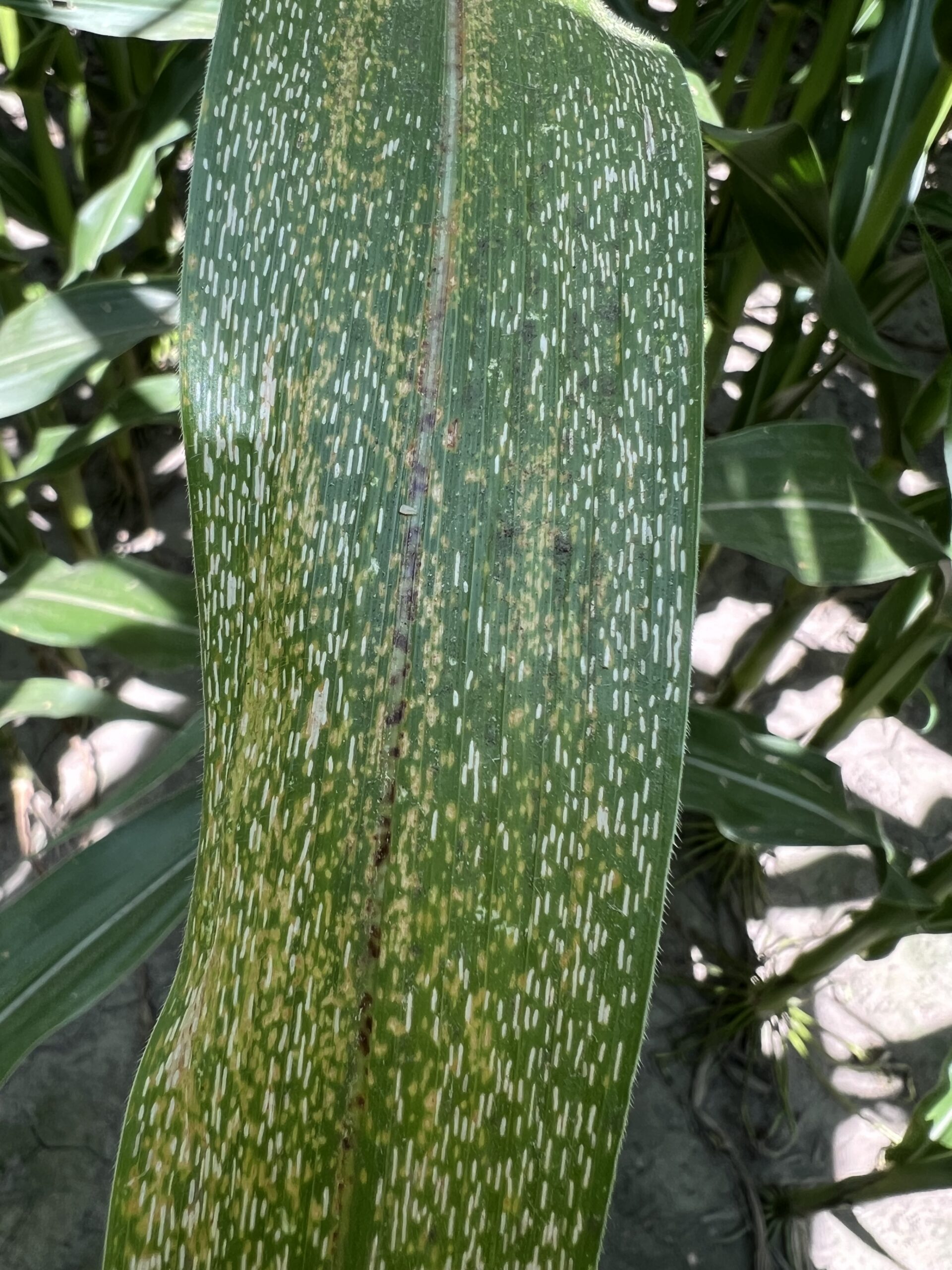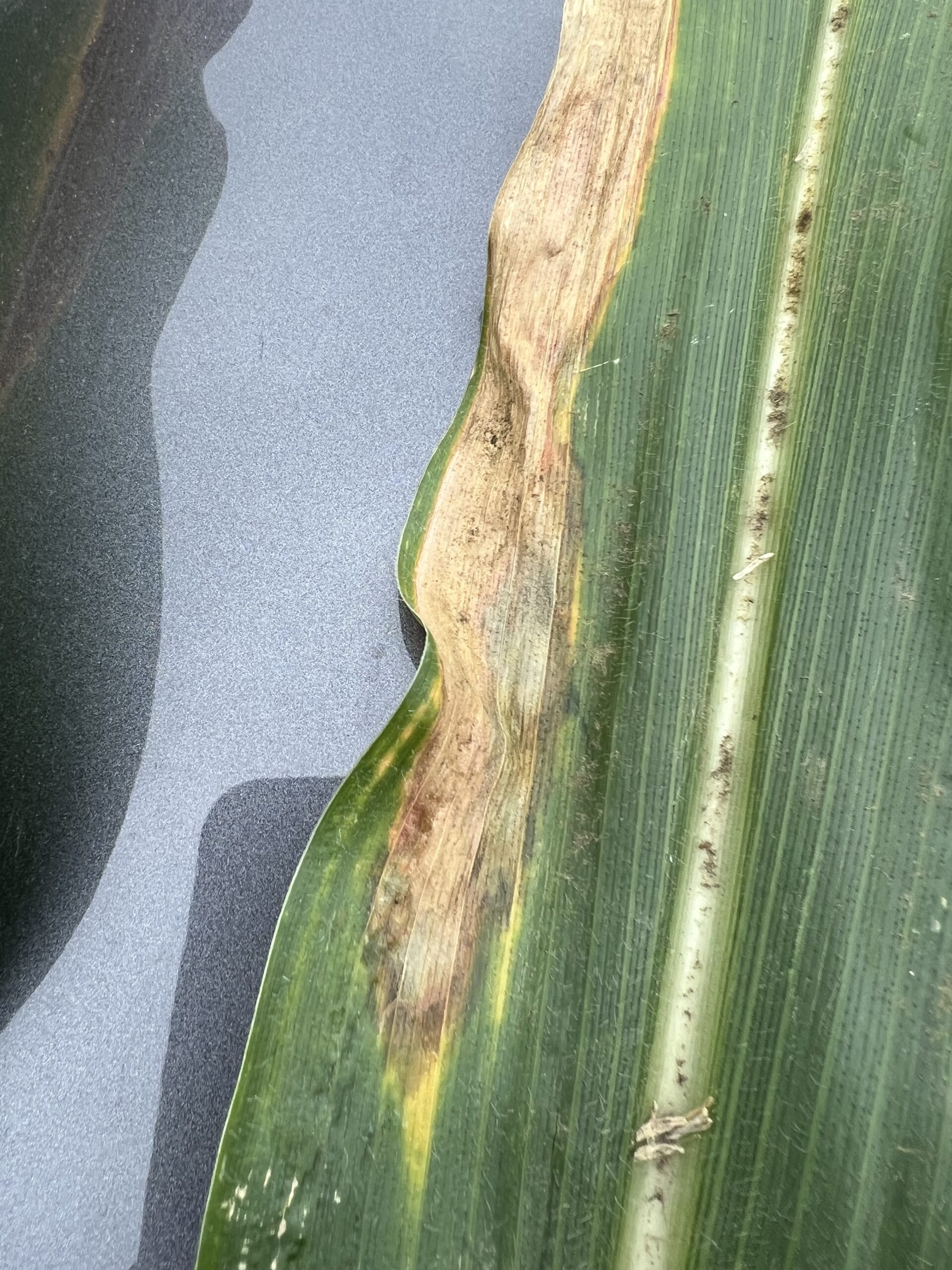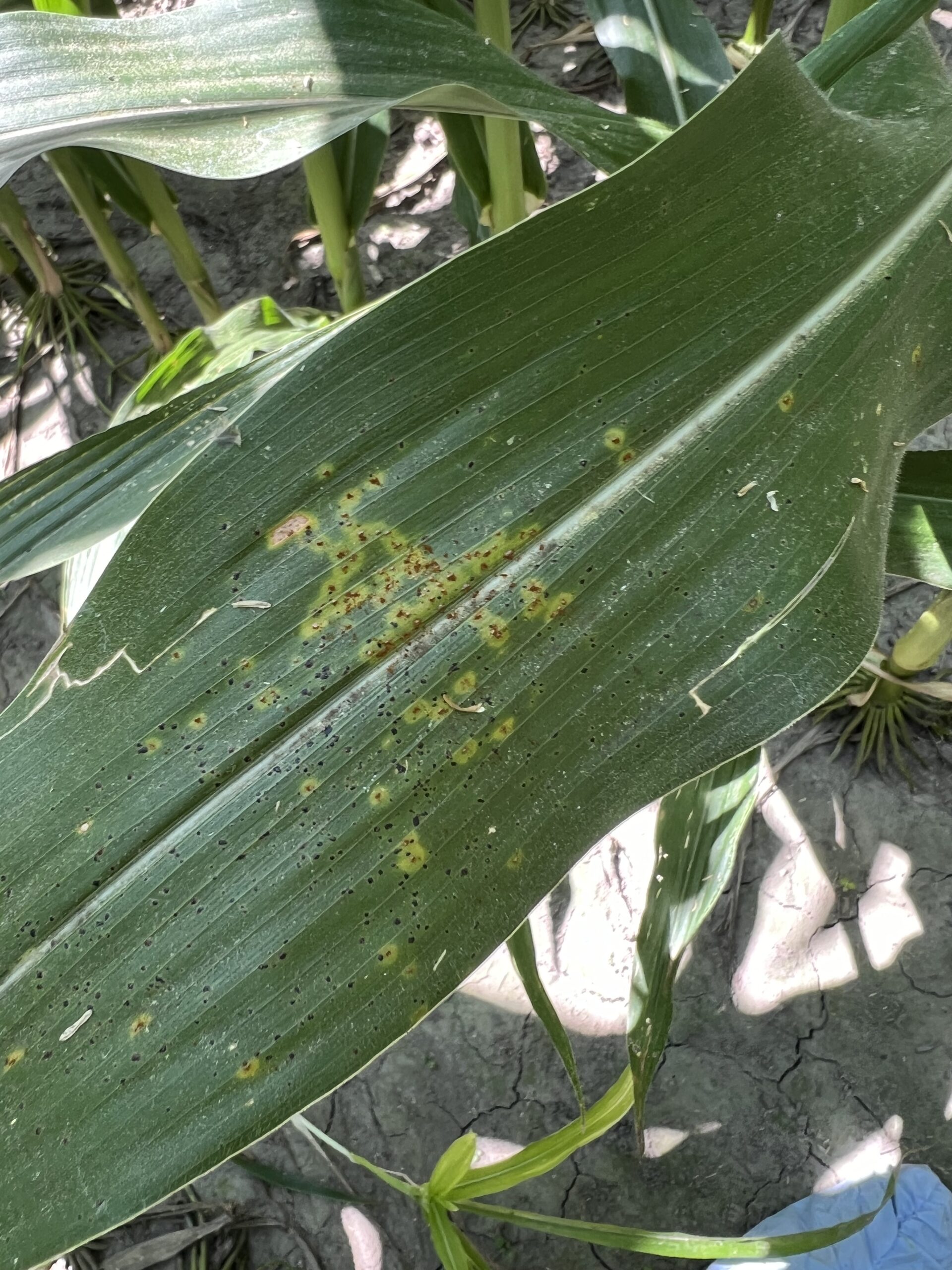As I sit in my home office, catching up on office work during the blazing heat, I’ve been hearing the constant buzzing of an “air tractor” making timely fungicide applications at corn growth stages VT – R1. In most areas of Illinois, many have already applied fungicides or are currently applying them, while some have chosen to go without. I’ve been talking with farmers and checking in on the latest social media buzz. Based on this, here are some of my thoughts on making fungicide decisions for the rest of the season.
Later Planted Corn
Those who could not plant their crops in April or early May will need to have a different mindset going into this year’s scouting season. The good news is that some early-season pests and diseases may have been avoided. The bad news is that planting late can increase the risk for later-season pests and diseases. Crop exposure to disease may be longer, and diseases could spread more quickly in later-planted crops.
Disease Triangle
Unfortunately, if you have susceptible corn or soybean hosts along with the right weather conditions, diseases could come all at once. Some areas of the state have been very wet, while others are dry, and the heat could be keeping some diseases at bay or away. Diseases prefer different optimal temperatures for infection and development. This may help explain why you’re seeing different diseases at various times of the season, in different regions of the state, or within different years.

Disease Watchouts
Some examples of corn diseases that could explode, depending on field conditions, are tar spot, southern rust, gray leaf spot, and northern corn leaf blight. Tar spot has shown up earlier this season in some areas, and southern rust spores have recently blown up from the southern U.S. and made their debut in Illinois. To follow the spread of these diseases, you can go to the Crop Lookout Ag Pest Monitor.
Bacterial Disease, Fungal Disease or Insect Damage?
We are all human and make mistakes. I have recently encountered pictures of Goss’s wilt that are being misidentified as northern corn leaf blight. I also saw a picture labeled as gray leaf spot that was really caused by an insect or corn blotch leafminer. In these cases, fungicide would not be warranted because these are not fungal diseases. It’s always good to get a second opinion or send a leaf to a plant diagnostic clinic. Often, there isn’t much time to make a fungicide decision, but don’t make a fungicide decision based on false information.
Physoderma Brown Spot
Conditions have been suitable for physoderma brown spot, especially in susceptible hybrids. There are fungicides that are labeled for this disease; however, most are not highly effected because infection occurs in the early vegetative stages or before tasseling. Once a corn plant is infected and symptoms have appeared, fungicides will not help because they are used for preventative measures. From here on out, if your corn does have physoderma brown spot, you should be focused on stalk quality because this disease can cause stalk rot. Be sure to evaluate whether you need to harvest early or before your other fields.
How Late Should You Spray?
The name of the game is to keep the corn canopy green above the ear. In some instances, certain corn hybrids may warrant a later or second application of fungicide, especially for diseases such as tar spot and southern rust, if onset was early. For these diseases, if disease pressure is high, it is not recommended to spray once, or again, when corn has reached the R3 growth stage (milk stage or brown silk).
Certain fungicides may be better suited for certain diseases, and you can use the Fungicide Efficacy Tool to make decisions. Lastly, there has been a lot of talk of pollination issues in corn. While there isn’t much you can do about them, you can continue to evaluate fields throughout the growing season. If you see that over 50% of ears are exhibiting a pollination problem, you may not want to spend more on a fungicide application.





 and then
and then